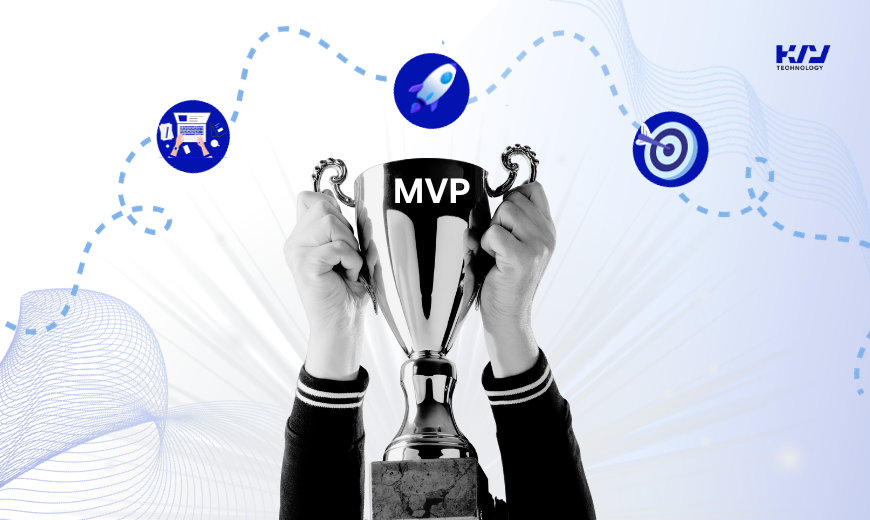
Taking the first step in the world of software entrepreneurship can be daunting. One of the most important steps you, as a founder, will take is the creation of a Minimum Viable Product, commonly referred to as an MVP. But why exactly is this step so crucial and what does it involve? Let’s dive into the specifics.
1. Understanding the Importance of a Minimum Viable Product (MVP)
As an innovative software founder, it’s crucial to swiftly drive your brilliant ideas from conception to market. However, rushing directly into full-scale development can be a high-risk strategy. It could lead to substantial financial loss, particularly if the market resonance isn’t as expected. Hence, the concept of the Minimum Viable Product (MVP) comes into play. It represents a strategic approach by which you can meet the demands of the marketplace with a functional product while minimizing potential risks.
The MVP is pivotal to the evolutionary stages of software development. The fundamental driving ethic is building the simplest version of your product that fulfills its basic functionalities while delivering value to its users. It’s not a shrunken or deficient version of your product, but rather, it is an effective tool that aids in validating assumptions about your product and its potential market, with minimal effort.
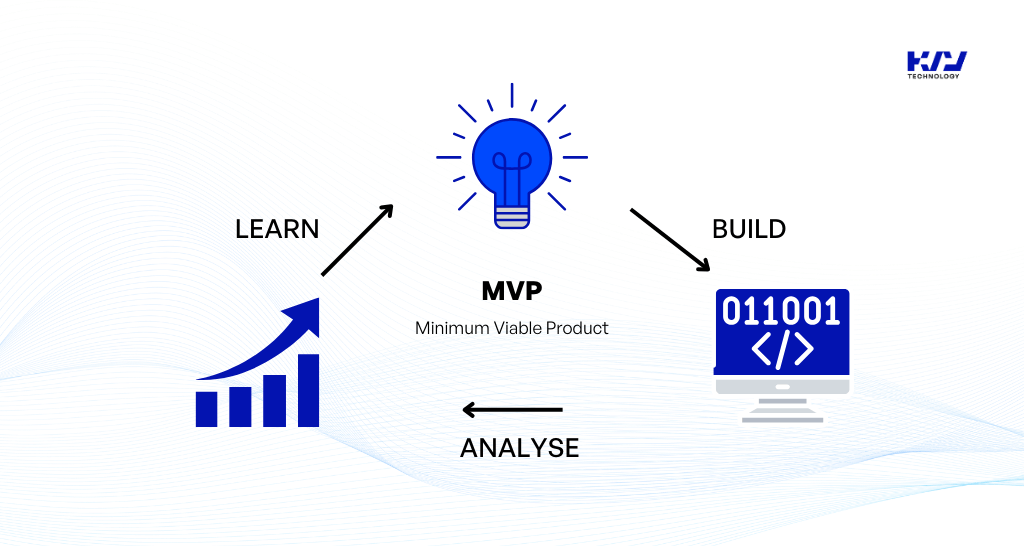
This product development strategy is an agile one, which allows you to learn from your audience, pivot when necessary, and build upon the lessons learned. With an MVP, you’re maximizing the data derived from real-world usage, while minimizing the complexities of development and time to market.
Why should you care about creating an MVP?
Cost-Effective: The MVP model saves money by focusing early development on key features, decreasing the likelihood of costly changes later.
Minimize Risk: Instead of fully investing in a broad product, an MVP allows you to test the water with a smaller, more manageable subset of features.
Faster Time to Market: By focusing on key features alone, you can quickly launch your product to meet market demands.
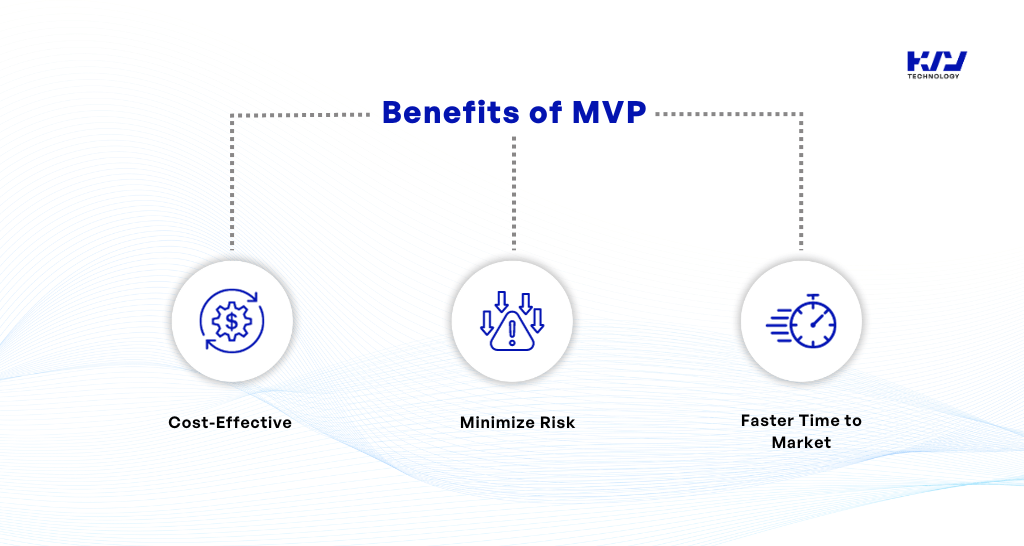
Moving forward, this guide will take a deep dive into the nuances of building an MVP, enlightening you on how to precisely identify your target audience, clarify your value proposition, prioritize core features, create a practical roadmap, test and iterate, and more. You’ll also gain insight into avoiding common pitfalls usually encountered in the MVP process. So buckle in for this deep dive into Product Management 101 – tailored specifically to you, the software founder.
2. Defining the MVP: What It Is and Why It Matters
Let’s dive right in. A Minimum Viable Product, or MVP, is a vital concept in the world of software development. But what exactly is it? Simply put, an MVP is a product that has just enough features to satisfy early customers and provide feedback for future product development. Think of it as the bare essentials of what your product could be – a basic version that achieves its purpose without unnecessary features.
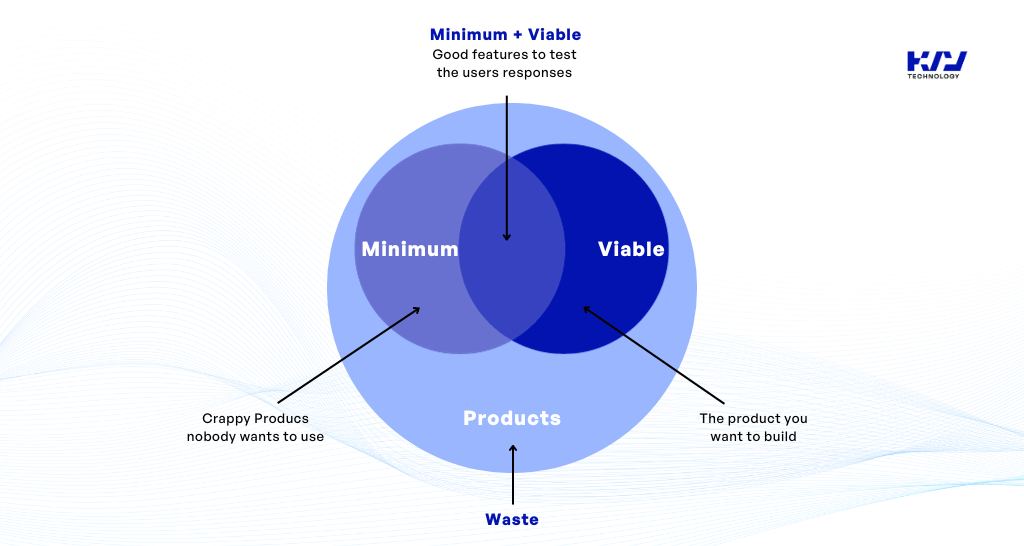
An MVP isn’t a primitive model of your product, nor a half-baked initiation into your grand plans. Instead, it’s a calculated strategy that allows you to test, learn, and iterate your product based on real-world feedback early in the software life cycle. Understanding the MVP mindset is not just about understanding software but grasping the art of prioritizing, learning rapidly, and minimizing waste.
2.1 Significance of an MVP
But why is an MVP so important? Well, the value of an MVP lies in its efficiency and practicality.
- Cost-Efficiency: First, MVPs are cost-effective. They allow you to validate your product idea before investing significant resources into the full product development. A successful MVP can attract more investors, thereby securing the funding required for future development.
- Feedback Generation: Second, an MVP is an excellent tool for gathering early-stage feedback. It enables you to assess user reactions and tailor your product to better suit the needs of your target audience.
- Risk Mitigation: Lastly, an MVP minimizes risk. In the unforgiving realm of software development, many brilliant ideas fail to achieve their potential. An MVP allows you to identify any issues or drawbacks in the early stages, reducing the risk of costly errors later on.
In summary, embracing an MVP approach in software development can help you learn much faster than your competitors, mitigate risks, and save resources without compromising your ultimate vision.
Remember, your MVP is not your end product; it’s a tool, a stepping stone towards a more polished and market-fit product. But before we get there, let’s explore how to identify your target audience, a crucial step you don’t want to skimp.
3. Identifying Your Target Audience: Who Will Benefit Most from Your Product?
Getting to your target audience is a critical step in your product development journey. It’s not just about knowing who they are but understanding their needs, their wants, and how your product can provide a solution for them.
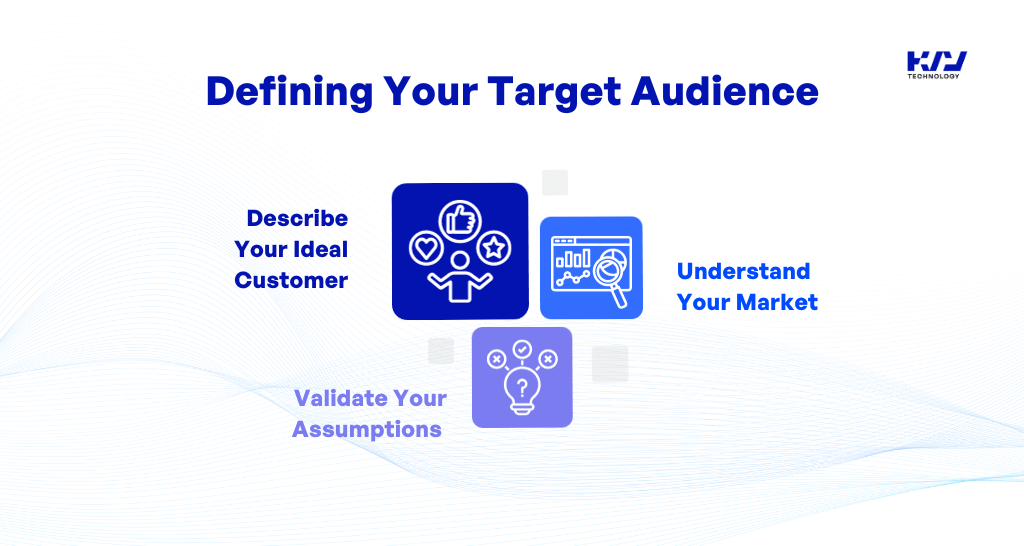
How do you start identifying your target audience?
3.1 Describe Your Ideal Customer
Begin by creating a detailed picture of your ideal customer. Who are they? What is their day-to-day life like? What problems do they face and how can your product solve them? Get as specific as you can, considering factors like their demographic, professional background, and lifestyle.
3.2 Understand Your Market
Your understanding of the market can dictate who your primary target users will be. It’s worth taking the time to do some in-depth research here. Look at your competitors’ customers, read industry reports, and pay attention to any emerging trends. Don’t be afraid to pivot if you find that another audience could benefit from your product.
3.3 Validate Your Assumptions
We often make assumptions about our target audience, but it’s essential to validate these with real-world data. Use surveys, interviews, and user testing to get a better understanding of your audience and adjust your approach accordingly.
This part of the process is not just about defining who your audience is but also identifying who will gain the most value from your product. By focusing on this group, you can tailor your MVP to meet their specific needs, creating a compelling value proposition that will attract and retain users.
Remember, identifying your target audience and recognizing their needs is an ongoing process. As your product evolves, so too will your understanding of who derives the most benefit from it. Keep returning to this step, refining and expanding your knowledge as your product and market continue to develop.
4. Clarifying Your Value Proposition: What Problem Does Your Product Solve?
In the journey of product management, an essential step is clarifying your value proposition. Remember, the most attractive MVPs are those that deliver meaningful solutions to urgent problems. So, ask yourself, “What problem does my product solve?”
The core of your business isn’t the product or the technology behind it. The core is the solution it provides to a specific problem your target audience faces. Understanding and clarifying this is the crux of your value proposition.
4.1 Defining Your Value Proposition
Your value proposition communicates the unique benefits your product offers compared to other alternatives on the market. It is a promise of value to be delivered, which in turn helps create a strong connection with your potential customers. This connection fosters trust, eliminates elements of risk, and motivates customers to make decisions in your favor.
Remember, a crystal-clear value proposition is one that is easy to understand, and more importantly, it catches the interest of your target audience and sets you apart from your competitors.
To validate your value proposition, here’s a simple exercise you can follow:
- Identify the problem: Write down the problem your product or service is set out to solve. Keep this simple, and ensure it speaks to the pain points of your audience.
- Showcase the solution: Now, define how your product or service solves that problem. Explain how your solution is unique and better than the alternatives.
- Specify the unique features: Make a list of the features or aspects of your product that make your solution superior. Highlight what’s different about your product. This could be anything from the technology used, and the pricing model, to the user experience.
- Test the proposition: Use a small sample group that fits your defined target audience to test your value proposition. Gather feedback, adjust, and iterate until you find a fit.
You need to keep exploring until you find a value proposition that resonates with your audience, differentiates your product, and boosts your business.

Remember, your product’s value proposition is not a one-time statement, but a dynamic element that might need to evolve as your business grows and markets shift. Keep testing and refining to ensure it remains compelling and relevant to your customers.
5. Prioritizing Core Features: What Must Be Included in Your MVP?
At the heart of your MVP, or Minimum Viable Product, lie the core features – the fundamental aspects that make your product practical and pertinent. The core features of your MVP are not merely the nice-to-have facets, but rather the must-have functionalities that solve your end-users’ pressing issues. Given the pivotal role they play, it’s essential to identify and prioritize these core features effectively.
5.1 Identify the Core Features
Start by revisiting your product’s value proposition. Examine the key issues it solves and the unique benefits it brings to your users. These insights will likely hint at the most crucial features. For instance, if you’re creating a productivity app, time-tracking might be a vital function. It would help users determine how their time is spent and find effective ways to economize it.
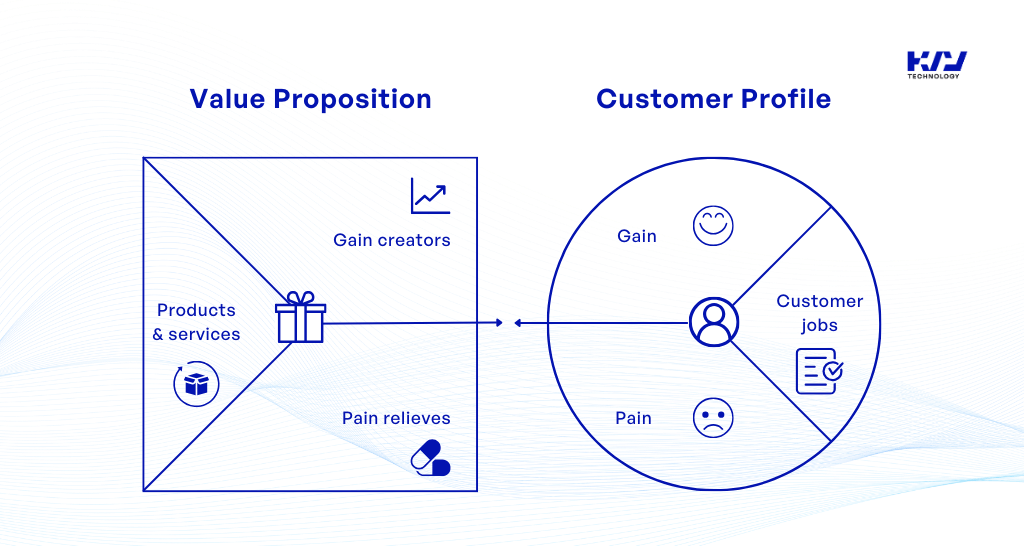
Another fruitful way to identify core features is by conducting user research. Explore the functions that your users hold as significant to their requirements and what features they would be disappointed not to have. You can use a variety of methods like user interviews, surveys, or usability testing to gather these insights.
5.2 Prioritize Effectively
Once you’ve identified the potential core features, the next step is prioritizing them. Here’s where the concept of the MoSCoW method comes in handy; it’s an effective way to classify these features into four categories – Must have, Should have, Could have, and Would like to have.
| MUST Have | The non-negotiables. Features that are crucial for the MVP to function and serve its purpose. |
| SHOULD Have | Important but not crucial. They can be pushed to later versions if necessary. |
| COULD Have | Nice-to-have features. Enhancements that provide a superior user experience but aren’t vital |
| WOULD Like to Have | Features that are luxury additions and could be considered once the product is stable and mature. |
This method aids in shaping your MVP by making sure it isn’t overloaded with features and yet serves its prime purpose effectively.
5.3 Maintain a Lean Approach
Remember, the underlying goal of your MVP is to gather user feedback with a bare minimum product. A common fallacy is to add too many features to the MVP. However, this could overwhelm your early adopters and overshadow the core problem-solving aspect of your product.
So, maintain a lean approach. Ensure that each feature you decide on is indeed a ‘must’ and not just a ‘nice to have’. This will enhance your product’s value for your users and subsequently maximize your return on investment.
In conclusion, prioritizing core features might seem challenging, but by identifying key needs, using effective prioritization strategies, and maintaining a lean focus, you can set your MVP – and subsequently your Full Product – up for success.
6. Creating an Effective MVP Roadmap: Planning for Success
As you embark on your journey of building your MVP, it’s essential to keep your eyes on the road ahead. This roadmap, a strategic plan that outlines your vision for the MVP, serves as a compass guiding you toward successful product development. It’s a document where you bring together your target audience, value proposition, and core features in a structured plan.
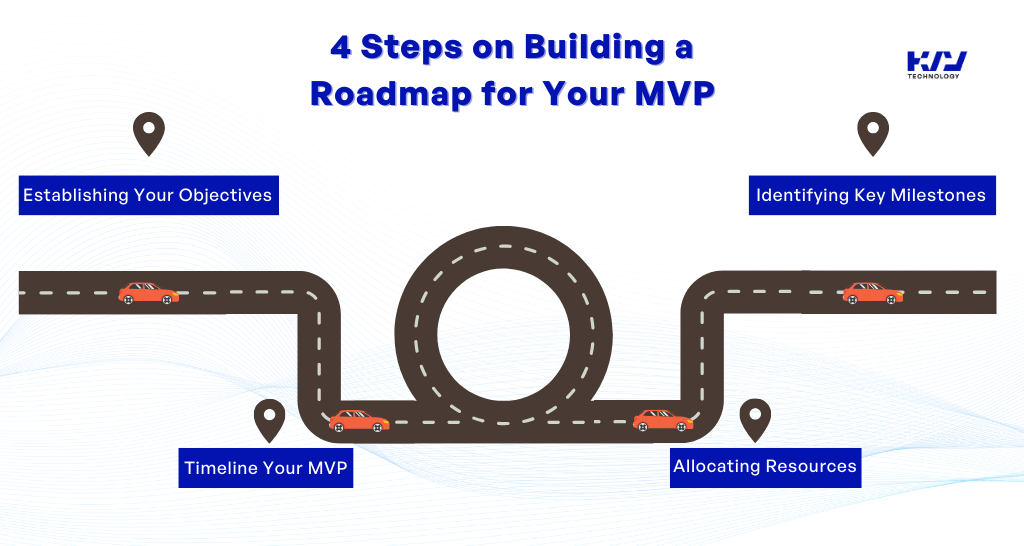
6.1 Establishing Your Objectives
Start with your product vision: the problem it solves, who it serves, and what its primary function is. This vision then needs to be broken down into strategic objectives. Think about what you want to achieve with your MVP. Is your objective to test a specific hypothesis? Attract early adopters? Gain investors’ interest? Your objectives should lead the way as you design your roadmap.
6.2 Timeline Your MVP
Now that you know what you want to achieve, the next step is detailing the timeline. While predicting every twist and turn during the development process is impossible, creating a timeline fosters accountability and helps measure progress. The timeline should be flexible enough to accommodate potential setbacks. Be realistic with deadlines and expectations – do not overpromise and underdeliver.
6.3 Allocating Resources
Your roadmap should also include detailed resource allocation. Identify the resources you have at hand and how they’ll be utilized in each stage. Resources could include your team’s time, skillsets, and financial contributions. Be clear on who does what, when, how, and with what resources. This process helps to avoid confusion and ensures everyone on the team understands their role and responsibilities.
6.4 Identifying Key Milestones
Lastly, your roadmap should enshrine critical milestones. These are significant events or stages in your product development that signify progress. It could be completing user interface design, finishing up the first usable version, or landing your first customer. These milestones are crucial for measuring progress and for maintaining motivation throughout the journey.
The journey to creating an MVP can be as thrilling as it is challenging. And, every journey is easier with a map. By carefully structuring your roadmap, you can ensure your venture is set up for success long before the first line of code is written.

Need to build an MVP?
We are happy to assist. Drop us a line and we will be there to share our expertise!
7. Determining Technical Feasibility: Assessing Development Challenges
As a software founder, one of the most critical steps in the product management process is determining the technical feasibility of your Minimum Viable Product (MVP). This involves an in-depth assessment of the potential development challenges that you may encounter during its implementation.
Technical feasibility refers to the practicality of developing your MVP with the current technologies, skills, and resources available. It’s about understanding both the potential and limitations of your toolkit and team. By assessing technical feasibility, you can identify and proactively address potential roadblocks that may emerge during development, ensuring smoother execution and better results.
Key Aspects of Technical Feasibility
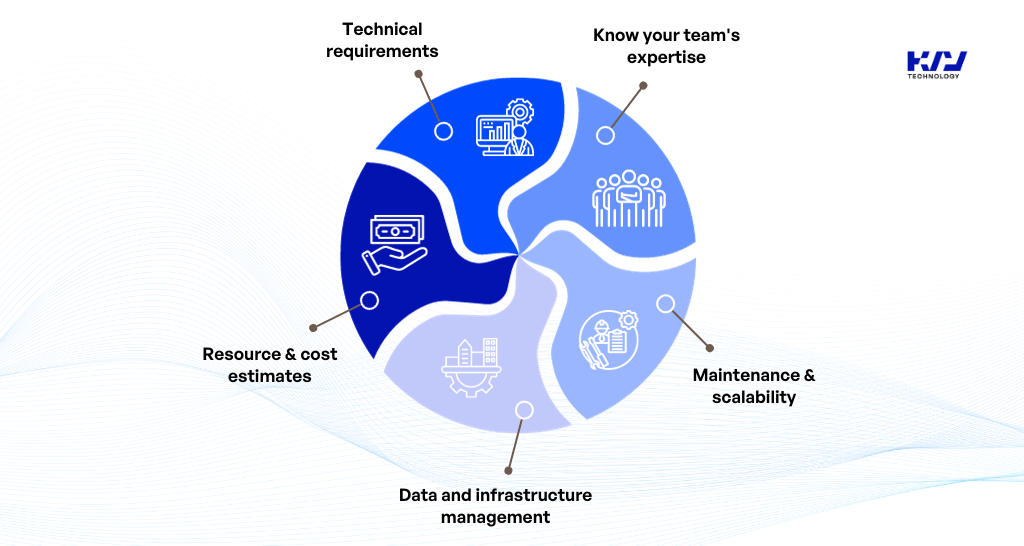
The following points are essential to consider when determining the technical feasibility of your MVP:
- Technical requirements: Start by identifying what technologies, tools, and platforms you’ll need to develop and support your MVP. Base this on the core features you’ve identified as crucial to your product.
- Know your team’s expertise: Assess the skills available to your team. This will help you understand whether you have the necessary talent to effectively develop your MVP or if you need to hire new members or outsource specific aspects.
- Resource & cost estimates: Evaluate if your current resources can meet the demands of your MVP’s development and how much it would cost to acquire any additional needed. This will assist you in budgeting and planning.
- Data and infrastructure management: Understanding how you’ll manage data and infrastructure is critical, particularly if you’re dealing with sensitive user data or heavy loads. GDPR regulations, for example, could influence how you manage and store data.
- Maintenance & scalability: Consider the MVP’s maintenance requirements post-launch and the scalability potential of your product. This perspective will help you plan for the long term.
By considering these points, you can effectively determine the technical feasibility of your MVP and better prepare for the journey ahead. Remember not to cut corners during this stage—adequate preparation is key to creating a successful, tangible product.
For software founders, the process of assessing technical feasibility may appear overwhelming at first. It’s a complex task and requires a keen understanding of your sector, technology, and team’s capabilities. However, it’s an invaluable step that will directly contribute to your MVP’s success, ensuring you’re fully equipped to face any development challenges that may come your way.
8. Testing and Iterating: Gathering Feedback to Improve Your Product
Once your Minimum Viable Product (MVP) is ready and out in the real world, the next step is your MVP’s validation – testing and iterating. You shouldn’t assume that you’ve nailed the product at the first attempt; no first version is perfect, and it’s OK. The essence of a good MVP is to continually refine and optimize it based on user feedback. This phase plays a pivotal part in your product’s success – it’s where you refine your MVP by learning what works and what doesn’t.
8.1 Why Testing Is Important
In this phase, you gather valuable insights and feedback directly from your initial users or early adopters. Remember, your MVP is a work in progress. Testing will help you observe how users interact with your software, understand their experiences, and locate any potential issues or bugs. It’s an opportunity to test your hypotheses about your audiences’ needs and the core functionality of your product.
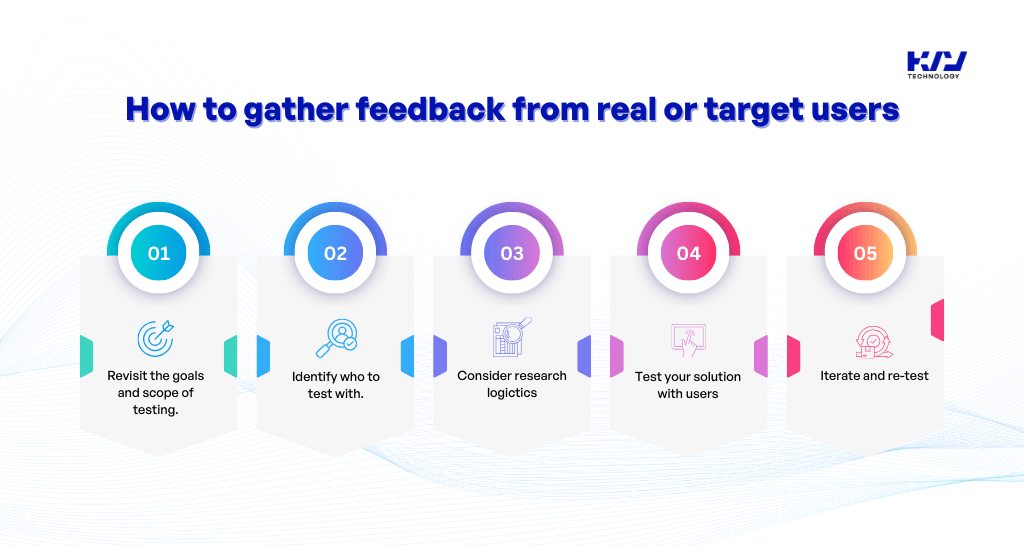
8.2 Iterating and Improvement
Testing brings insights; insights lead to iterations. Once you collect the data from the user testing, it’s time to analyze and make sense of what you’ve heard and observed. The feedback received allows you to iterate on your product’s design and functionality. This iterative approach to development, which involves repeated cycles of testing and improvement, ensures that your product remains responsive to user needs and market shifts.
8.3 Methods for Gathering Feedback
Gathering feedback can be done in various ways, including user interviews, surveys, usability tests, and more. In every methodology, it’s key to make the process as easy and user-friendly as possible to maximize user participation. Remember these inputs should be more than just usability – they should touch on aspects of value, utility, and overall satisfaction. Be open and receptive to criticism.
8.4 The Cycle Continues
Getting your MVP to market is just the start. The development of your product does not merely stop at its launch. It is important to keep the cycle of testing, getting feedback, and iterating alive throughout the life of your product. This cycle is what allows your product to grow, evolve, and keep up with shifting market trends and user expectations, ensuring its continual relevance and success.
By consistently and constructively using feedback, you’ll not only enhance your product’s value but also strengthen your relationship with customers. Remember, they are your product’s most crucial ambassadors, and their feedback is a treasure trove of information, ready for you to explore and utilize to enhance the overall quality and success of your product.
9. Avoiding Common Pitfalls: Lessons Learned from Failed MVPs
As you set out on your journey to develop your MVP, you must take note of what not to do, just as much as what to do. Studying the pitfalls that have led to the failure of others will provide you with a significant advantage and pave the way for a smoother development process. Let’s explore some common mistakes you should aim to avoid when creating your MVP.
9.1 Undefined Target Audience
Failure to define and understand your target audience can lead to a mismatch between your product and potential users. To avoid this, ensure to carry out comprehensive market research and user persona development. Knowing whom your MVP is developed for and understanding their needs, wants, and pain points will guide you in making informed product decisions.
9.2 Lack of Unique Value Proposition
If your product lacks a unique value proposition, it might get lost in the flooded market of software products. Your product must offer something of unique value that differentiates it from the competition. Therefore, clearly define the distinctive value that your product brings to the market and communicate this effectively to your target audience.
9.3 Overwhelming Feature Set
Adding too many features to your MVP can overshadow its primary purpose, confuse your users in the process, and lead to diminished product focus. Remember, an MVP focuses on core features that directly address the problem you’re trying to solve. Avoid the allure of feature creep; stick to providing a simple but effective solution to a problem.
9.4 Ignoring User Feedback
A big mistake software founders often make is ignoring user feedback. Your MVP is not a ‘one and done’ product. Instead, it is a continuously evolving prototype based on user feedback. Ignoring this feedback can lead your product development down the wrong path. Take on board the feedback from users, both positive and negative, and use this to iterate and improve your MVP.
9.5 Taking Shortcuts in Technical Feasibility
While it’s tempting to rush the MVP to market, taking shortcuts in assessing technical feasibility can be disastrous. A balance must be struck between quick delivery and dependable performance. Simply shipping a product without taking into account the technical viability may result in a poorly performing product that erodes user trust and confidence.
In conclusion, learn from the failures of others. Keep your user in focus, your proposition unique, your features streamlined, your feedback incorporated, and your technical checks thorough. By avoiding these common pitfalls, you’re more likely to build a successful MVP that lays a firm foundation for your final product.

Still unsure about the starting point?
Get a project evaluation and consultation from our specialists.
Final Thoughts
Wrapping up, as a conscious software founder, absorbing knowledge from others’ mistakes, can save you from slipping into similar potholes. Precisely, your user’s needs should always be at the forefront of all decisions. Importantly, your product must stand out, offering something distinctive that captures interest and disputes the competition.
Remember, an MVP is a minimalistic version of your product, and the features it includes should echo this ideology. The key is to strategically cherry-pick the most essential features that provide real value to the users. Resist the lure of adding superfluous features that can dilute the core value offering and burden the user experience.
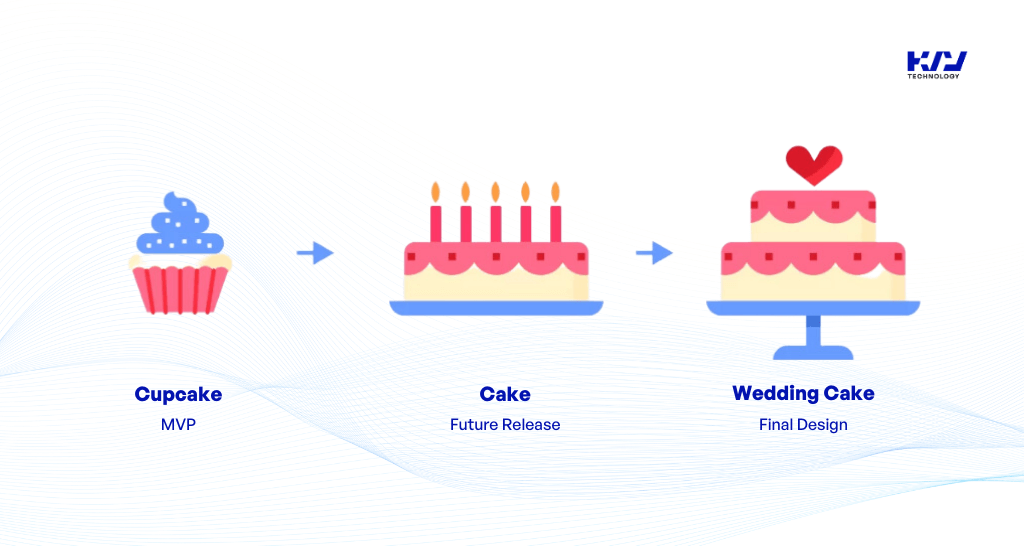
Feedback is the priceless gift you receive from your users. It is a treasure trove of insights that can help reorient and refine your product. Welcoming and appropriately assimilating these suggestions can dramatically improve your MVP.
Technical Rigor is Non-negotiable
Never take a laid-back attitude towards the technical aspects of your product. An MVP, even if minimal, should uphold high-grade performance. A user’s initial experience with your product can significantly affect their future engagement, and thus, there should be no room for compromise on user experience and quality.
In essence, ensuring these core dimensions can steer your MVP toward success and establish a solid groundwork for your final product. As a software founder, adopting this thoughtful strategy towards MVP creation can drive a substantial impact on your product’s journey, functioning as a vital stepping stone toward your ultimate vision and ambitions.
If you have any questions regarding Minimum Viable Product (MVP), feel free to contact KVY TECH
FAQ
An MVP is a product that has just enough features to satisfy early customers and provide feedback for future product development. Think of it as the bare essentials of what your product could be – a basic version that achieves its purpose without unnecessary features.
Embracing an MVP approach in software development can help you learn much faster than your competitors, mitigate risks, and save resources without compromising your ultimate vision.
MVP roadmap consists of the following steps:
- Establishing Your Objectives
- Timeline Your MVP
- Allocating Resources
- Identifying Key Milestones


